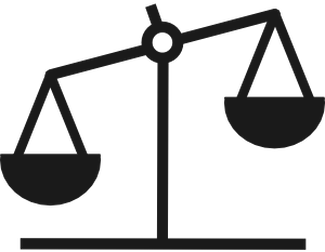|
Remember this guy: If a=b, and b=c, then a=c? Let's take that logic and apply it to the principles of strength and balance as it pertains to the Pilates work, comme ça: a = strength b = dynamic movement c = balance If strength equals dynamic movement, and dynamic movement equals balance, then what we're aiming to understand and sense in our body as we practice the Pilates method is that all of the exercises and choreography equate STRENGTH with BALANCE. (I knew there was a reason I enjoyed that logic course I took my freshman year at Bucknell.... ) Ok, Stephanie, sure. But what do you mean by strength? What do you mean by dynamic movement? And what do you mean by balance? I'll answer those questions by explaining what I don't mean by each term. I am not referring to strength in terms of how much weight a particular muscle can endure under a load before failure, as in a dead lift. I am not referring to dynamic movement in terms of intensity of movement, as in how fast you can run 100 meters. And I am not referring to balance in terms of we do at the end of each class, as in standing on your toes with your eyes closed. Rather, I'm referring to strength as the balanced musculoskeletal system achieved through dynamic movement where the full range of motion of the joints is employed consistently, thereby leading to maximum amount of efficiency for least amount of effort. Uh, please expand a little. Sure thing. For our musculoskeletal system to support us efficiently under the weight of gravity each and every day, our muscles must work together. One is the agonist, the primary mover, and the other is the antagonist, the supporter. Think of drinking a cup of tea. The biceps, because they are our main elbow flexors, act as the agonist that brings the cup of warm, aromatic liquid to our lips; the triceps then act as the antagonists to support their partners, the biceps, as the cup returns to the table so we keep our white doily tablecloth spotless. Think of muscles in terms of a relationship. When the relationship's healthy, a partnership exists. When both partners support each by doing their share of the work, all goes smoothly, everyone's happy and balanced, standing tall and grounded together. However, if one person works harder than the other person, there's not enough balanced support, which leads to feelings of being overworked, stretched too thin, and exhaustion and heat will more than likely occur. Co-dependency ain't great either, because all that passive-aggression can leads to sticky fascia, like duct tape stuck to itself, but that's for a different blog...
Some folks have scoliosis. Maybe you played field hockey as a kid and your spine is twisted to the right because of how you held the stick. Or you were an ice skater and you always took off for your jumps with your left foot. We're not trying to completely rid ourselves of those beautiful quirks, however. Instead, we're trying to embrace them so that we know how to cope under daily stresses. Above all, when we practice Pilates, we're building awareness of how our body has adapted and compensated to keep us upright and mobile, and then using that knowledge to re-balance our body to live pain free.
I know I said that I wasn't referring to balance as the balance we practice in class and our sessions together on all kinds of wobbly surfaces, but I want to mention it here in relationship to dynamic movement. Balance is a dynamic process. Even when we are feeling steady high up on our tiptoes there's a whole host of movement happening externally and internally firing up our neurons and sending extremely valuable information from our body to our brain and back again to tell us where we are in space, how far away from an object we are, and how we may need to shift to avoid falling on an uneven surface. Lucky for us, all of the Pilates exercises engage in dynamic movement, so we're constantly challenging our muscles to work together as efficiently as possible every moment of every session. Like many other amazing qualities, strength comes from within - literally within our unique musculoskeletal system. The more balanced, aware of, and grounded we are in our own beautiful asymmetries, the more we can take on this dynamic world around us.
0 Comments
Leave a Reply. |
Authori'm stephanie. my last names mean "hedgehog" in Czech and "pretty calf" in French. i have an MA from Oxford in English lit, and a MFA from Riverside in experimental choreography. i like to write. i have lots of thoughts on the body. and i want to help you understand your own better. oh, i'm also plant-based and love to bake with vegan ingredients. |


 RSS Feed
RSS Feed